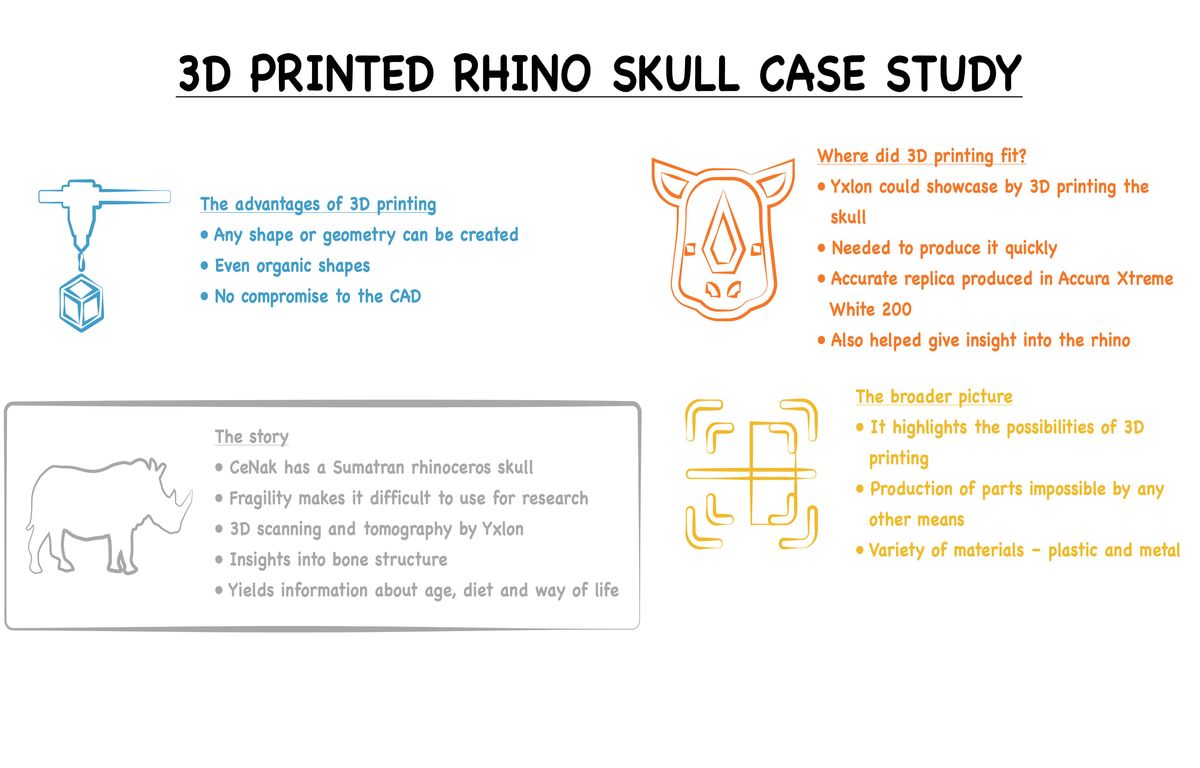
3D Printed Rhino Skull Case Study
Your masterclass in product design and development
Protolabs’ Insight video series
Our Insight video series will help you master digital manufacturing.
Every Friday we’ll post a new video – each one giving you a deeper Insight into how to design better parts. We’ll cover specific topics such as choosing the right 3D printing material, optimising your design for CNC machining, surface finishes for moulded parts, and much more besides.
So join us and don’t miss out.
Insight: 3D Printed Rhino Skull Case Study
Transcript
Hello and welcome to this week’s Insight.
We’ve covered lots of topics over the last few months and we’ve discussed the advantages of different types of manufacturing. Today I’m going to focus on 3D printing, but instead of running through some tips and tricks of the trade, I’m going to tell you about a project that shows you how versatile this additive manufacturing technology really is.

Now I’ve said many times that one of the great advantages of 3D printing is that you can produce virtually any geometry or shape that you want. You can even produce organic shapes that are simply not possible using other production technologies. This makes it great for all sorts of applications and as a design engineer you don’t need to compromise your CAD.
To prove the point let me tell you about the time that we produced a 3D printed Sumatran rhinoceros skull.
To find out why we did this, I need to briefly go back a couple of steps.

Now, sometimes the original relics and remains of extinct and endangered animals don’t reveal much to scientists about their living conditions.
A good example is the Sumatran rhinoceros, of which there are only 100 left alive, so the battle is on to save this animal from extinction. Hamburg University’s Natural History Centre, or CeNak, who research biodiversity and evolution, has a skull of one dating back to the 1920s.
Unfortunately, it is difficult to use this for basic research and find out more about their living conditions and the structure and anatomy of the bone.
To overcome this CeNak started searching for partners that could help them make a more detailed study of the skull. They found a company called Yxlon International who specialise in industrial radiography and tomology.
For those of you who don’t know, and I for one didn’t, tomology involves imaging a structure by sections using X rays or Ultrasound.
Anyway, Yxlon is normally more at home with castings, engines and electronics, but to cut a long story short they produced a high resolution 3D scan of the skull that allows the scientists to simulate biomechanical behaviour – such as chewing for example.

The scan managed to create even the finest of structures in the skull, down to 100 microns in size. The resulting 3D image provides researchers with a huge amount of new information that was not revealed by previous research.
For instance, new insights into the bone structure plus the biomechanical positions of the two jaw parts in relation to each other enabled the scientists to gather evidence about the animal’s age, diet, and way of life.
This is important because some of these conclusions could help scientists find new habitats where the Sumatran Rhino could be resettled and hopefully help avoid its extinction.

With special thanks to Natalie Constable.











